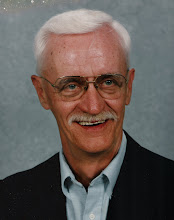Is Team Hardin County a WOMBAT?
(Waste Of Money, Brains And Time)
(Waste Of Money, Brains And Time)
The concept of centralized or joint economic and community development is certainly NOT a WOMBAT. The effectiveness of Team Hardin County’s responsibility in filling that role could be, and certainly should be from time to time, challenged, evaluated or questioned.
My problem in not with the concept or necessity of having a central contact group for those interested in Hardin County, for whatever reason. My problem has always been the management and effectiveness of Hardin County’s version of that group.
Each county is required by T.C.A. §6-58-114 to establish a joint economic and community development board (JECBD). The purpose of the JECDB is "to foster communication relative to economic and community development between and among governmental entities, industry and private citizens." A very worthy purpose, but is it working in Hardin County?
The simple answer to that question is, apparently not. At least not from the private citizens standpoint. One has to only read The Courier or even visit our internet presentations to find examples of it’s misstatements of reality and facts.
In The Courier’s May 18, 2006 edition the retiring Chief Executive Officer of Team Hardin County is quoted as saying that we have one of the highest average manufacturing wage in the state, at about $20.00 per hour. Also, that despite the loss of the backbone of the local manufacturing sector, the garment industry, there are now some 4,500 more Hardin countians working here than there were in the early 90s.
Based on my own research on the manufacturing sector in Hardin County that found that the average wage was less than $13.00 per hour, I would challenge and question both of these alleged facts.
According to the University of Tennessee Center for Business and Economic Research, our manufacturing jobs declined from 2,262 to 2,089 and our total nonfarm employment declined from 6,618 to 6011 between, 2001 and 2004. This same report found that the average annual pay for nonfarm employment increased from $26,710 to $27,234 during the same period, reflecting about $13.00 per hour NOT $20.00 per hour.
One would certainly have to question the proposition that there are now some 4,500 more jobs here in Hardin County than there were in the early 90. Would that would mean that those that lost their jobs in the garment industry had found another job, plus an additional 4,500 more jobs had been created? Highly questionable at the least.
There is a propensity in Hardin County to either embellish, overstate or understate the facts to suit their pronouncements. A clear example would be that despite the U.S. census of 2000 findings that we have a 77.2% home ownership rate in Hardin County, our county government pronounced that only 38% of the population pay property taxes, when they wanted to justify the increase in our wheel taxes.
But I digress. If one were to review our County presence on the internet, one would find that it is full of mis-stated facts and figures and omits or misplaces other vital information.
So, the question becomes, what do we do about it?
The first recommendation would be that someone be placed in charge of a complete top to bottom review of our efforts to present a timely, factual and accurate communications effort relative to economic and community development between and among our governmental entities, our industry sector and our private citizens.
This could be accomplished with an organizational review and evaluation with recommendations for necessary improvements to accomplish our goals for having the organization in the first instance.
Organization Analysis/Functional Analysis
The most successful work efforts are accomplished with the right departments performing the right tasks with the right people. While that sounds simple, it is astounding how many organizations are not aligned for maximization of efforts. Cross-overs of tasks or gray areas in who owns the responsibilities can cost time and money. Analyzing the structure of the organization and then the functions in terms of what is done, by whom and which function(s) is/are critical to results.
This process would examine the organizational and functional alignment. This determines the structure that is the best for maximizing people and their talents.
Both organizational analysis and functional analysis are different, yet they go hand in hand. One looks at the total organization and the other puts the focus on the unctions/departments/groups and individuals.
In the functional analysis for example, one would ask questions such as:
How is the work aligned? Are jobs and tasks aligned correctly? Do you have accountability for all critical functions? How many tasks are not owned by anyone or are worked on by two people/groups resulting in a lot of finger pointing? Are the right functional responsibilities aligned with the right departments? Are some people overloaded while others have free time on their hands? Are the people aligned correctly in terms of FTE (Full Time Equivalents)? Do we have back up for critical people and their skills?
In the organizational analysis the study would exam the organization in the bigger picture...
How is the organization aligned to achieve the maximum efficiency and meet it’s goals. What are the interfaces between departments? What issues do we have in terms of breakdowns in our systems and processes (both technical and people).
Respectfully submitted for your consideration.


No comments:
Post a Comment